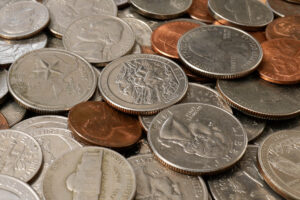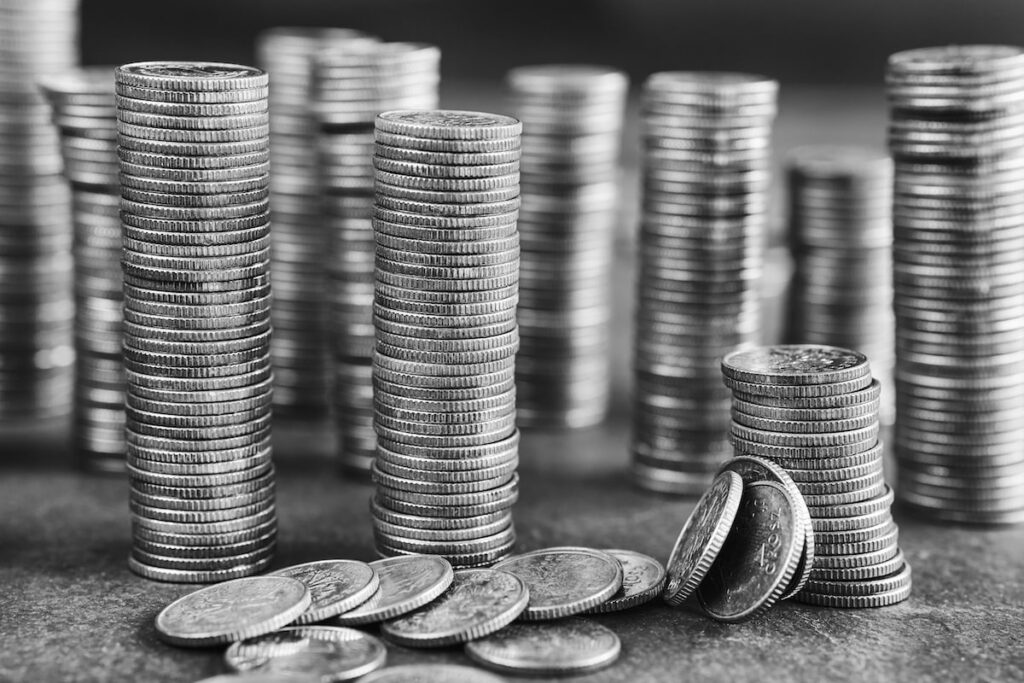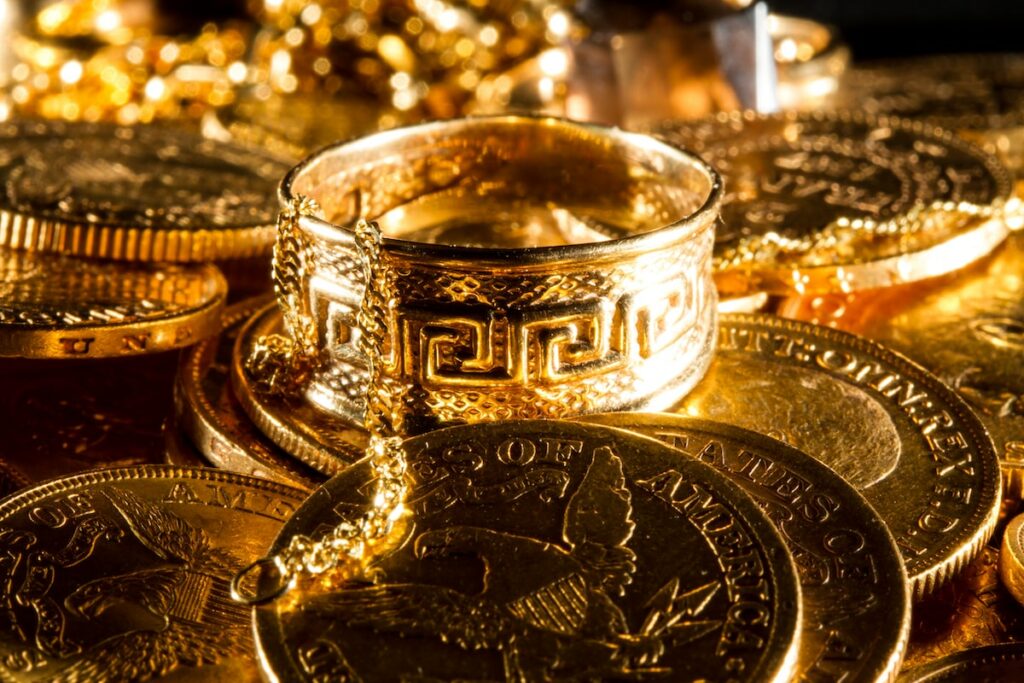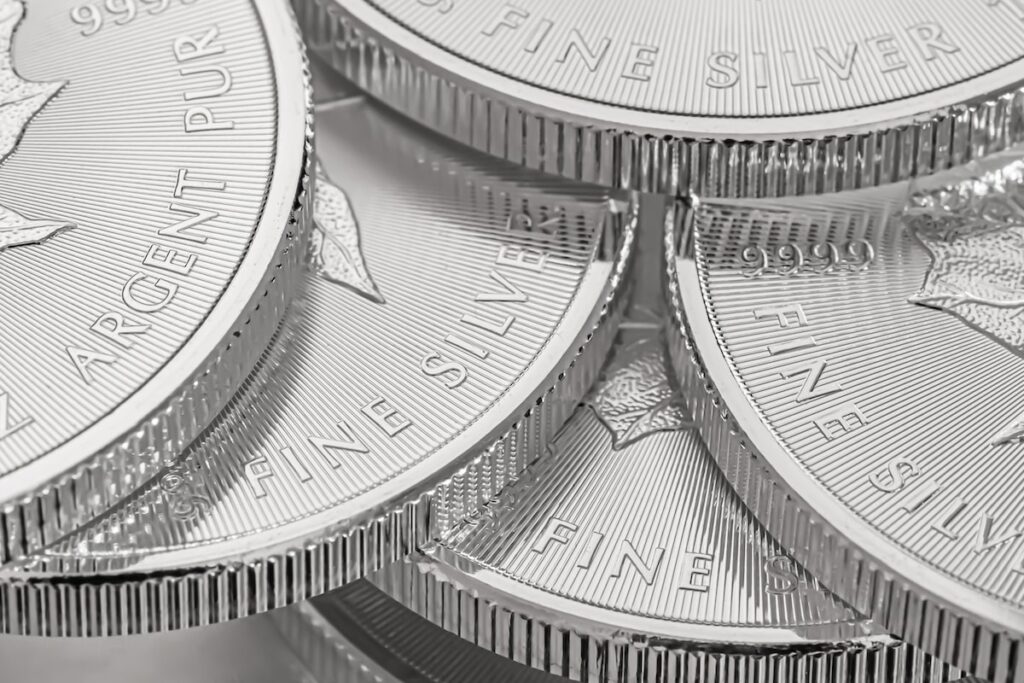In a world filled with countless coins, distinguishing between silver and non-silver quarters can perplex many.
With their shiny surfaces and distinctive designs, quarters have long captivated the curiosity of numismatists and everyday coin enthusiasts alike.
Uncovering the secrets behind a quarter’s composition requires a keen eye, an understanding of historical context, and a willingness to embark on a journey through time.
The simplest way to tell if a quarter is silver is by checking its date. Quarters minted before 1965 were made of 90% silver, while those minted after that year are composed of a copper-nickel alloy.
Join us as we delve into the fascinating realm of coin identification and unravel the mysteries surrounding the detection of silver quarters.
Visual Examination: Analyzing the Appearance
Visual examination is crucial in determining whether a quarter is made of silver.
Silver quarters have distinct characteristics that can be observed through careful observation.
One key aspect to consider is the overall color and luster of the coin.
Silver quarters have a brighter, shinier appearance than their copper-nickel counterparts.
They often display a white or light-gray hue, which sets them apart from non-silver quarters’ more golden or coppery tones.
Another visual cue lies in the coin’s edges.
Silver quarters typically have a smooth and rounded edge, while non-silver quarters may feature a more pronounced and serrated design.
This difference can be detected by observing the coin’s edge under good lighting conditions.
Furthermore, examining the fine details of the coin’s design, such as the relief and sharpness of the images, can also provide clues.
Silver quarters, especially older ones, tend to exhibit crisper and more intricate details due to the malleability of silver as a metal.
While visual examination can provide valuable insights, it’s important to note that the appearance alone may not always be definitive.
Wear and tear, coin cleaning and natural toning can affect visual cues.
Therefore, additional tests and considerations are often necessary to accurately identify silver quarters.
Date Check: Decoding the Silver Era
A date check is one of the most straightforward methods to determine if a quarter is silver.
Decoding the silver era involves examining the minting year of the coin, as there was a significant composition shift in U.S. quarters that occurred in 1965.
Before 1965, quarters predominantly comprised 90% silver and 10% copper.
This silver content imparted a distinct value and appearance to these coins. If you come across a quarter with a minting year before 1965, there is a high probability that it is made of silver.
Collectors and investors highly seek after these pre-1965 quarters due to their intrinsic silver value.
However, starting in 1965, the U.S. Mint transitioned to a copper-nickel alloy for quarter production.
Quarters minted from 1965 onwards contain no silver and are composed of copper and nickel.
If the date on the quarter falls within this period or after, it is highly likely to be a non-silver coin.
The date check method is a quick and reliable way to identify silver quarters without requiring specialized equipment or additional tests.
However, it is important to consider that counterfeit coins or rare anomalies may exist, so other verification methods can be employed for utmost certainty.
Weight Comparison: Assessing the Density
Another method to determine if a quarter is made of silver involves conducting a weight comparison and assessing the density of the coin.
Due to their higher silver content, silver quarters tend to be slightly heavier than their non-silver counterparts.
You will need a precise digital scale to measure in grams to compare weight.
Start by weighing the quarter in question and record its weight.
Then, compare this weight to the standard weight of a quarter based on its composition.
A standard silver quarter minted before 1965 should weigh approximately 6.25 grams.
On the other hand, a non-silver quarter minted from 1965 onwards will have a standard weight of around 5.67 grams.
Remember that wear, damage, or contamination can affect a quarter’s weight, which may slightly alter the coin’s weight from the standard.
However, a significant deviation from the expected weight range can indicate a potential difference in composition.
It’s important to note that a weight comparison should be used as a supplementary method in conjunction with other identification techniques.
Factors such as errors in minting, variations in planchet thickness, or counterfeiting can affect the weight of a coin.
Therefore, combining weight comparison with other reliable identification methods is advisable for a definitive assessment.
Magnet Test: Attraction or Repulsion?
The magnet test is another method that can be employed to help determine if a quarter is made of silver.
This simple test relies on the fact that silver is non-magnetic, whereas certain other metals, such as nickel and iron, are attracted to magnets.
You will need a small magnet, preferably a strong neodymium magnet to conduct the magnet test.
Hold the magnet close to the quarter and observe its reaction. If the quarter is attracted to the magnet or exhibits any magnetic properties, it indicates that the coin is not made of silver.
Conversely, if the magnet does not attract or repel the quarter, it suggests that the coin may be composed of silver.
It’s important to note that the magnet test is not foolproof and should be used as a preliminary assessment.
Some non-silver coins may not be magnetic, while certain silver-plated or counterfeit coins can exhibit magnetic properties.
Therefore, while the magnet test can provide initial insights, it should be accompanied by additional identification methods to accurately determine a quarter’s silver composition.
Remember, the magnet test is just one tool in a numismatist’s arsenal, and combining it with other techniques such as visual examination, weight comparison, and date verification can help ensure a more reliable assessment of a quarter’s silver content.
Sound Test: The Ring of Authenticity
The sound test, often referred to as “the ring of authenticity,” is an auditory method used to assess the composition of a quarter.
This test takes advantage of the distinct acoustic properties of different metals, including silver.
To conduct the sound test, hold the quarter between your thumb and forefinger and let it rest on the tip of your finger.
Then, gently tap the coin’s edge with another coin or a small, non-abrasive object.
Pay close attention to the sound produced.
Silver quarters produce a clear, high-pitched ringing sound that lingers longer.
This is due to the inherent properties of silver, which results in a sonorous and resonant tone.
On the other hand, non-silver quarters, typically composed of copper-nickel alloys, produce a duller, lower-pitched sound that fades quickly.
It’s important to note that the sound test should be used in conjunction with other identification methods, as variations in the coin’s condition, thickness, and minting process can influence the sound produced.
Additionally, counterfeit coins or anomalies can mimic the sound of silver quarters, making it essential to combine the sound test with other reliable techniques for a comprehensive evaluation.
By employing the sound test alongside visual examination, weight comparison, and date verification, numismatists can better understand a quarter’s composition and increase their confidence in determining whether it is made of silver.
Chemical Testing: Unveiling the True Metal
Chemical testing is a more advanced method used to unveil the true metal composition of a quarter.
This technique involves applying specific chemicals to the coin’s surface to observe the reaction, which can help identify if the quarter is made of silver or another metal.
One commonly used chemical for this purpose is nitric acid.
By carefully applying a drop of diluted nitric acid to a discreet area on the coin’s surface, a reaction can occur that provides valuable information.
If the coin turns a creamy or milky color, it suggests it contains copper, indicating a non-silver composition.
However, if there is no noticeable reaction or if the coin remains unchanged, it implies that the coin might be made of silver.
Handling chemicals cautiously and following proper safety protocols when conducting chemical tests is important.
Additionally, chemical testing can potentially damage the coin’s surface, so it is advisable to perform the test in an inconspicuous area or seek professional assistance if the coin holds significant numismatic or historical value.
Chemical testing should be reserved for cases where other identification methods are inconclusive or when a definitive confirmation of the silver content is necessary.
It is a more specialized technique that may require experience and expertise to interpret the results accurately.




